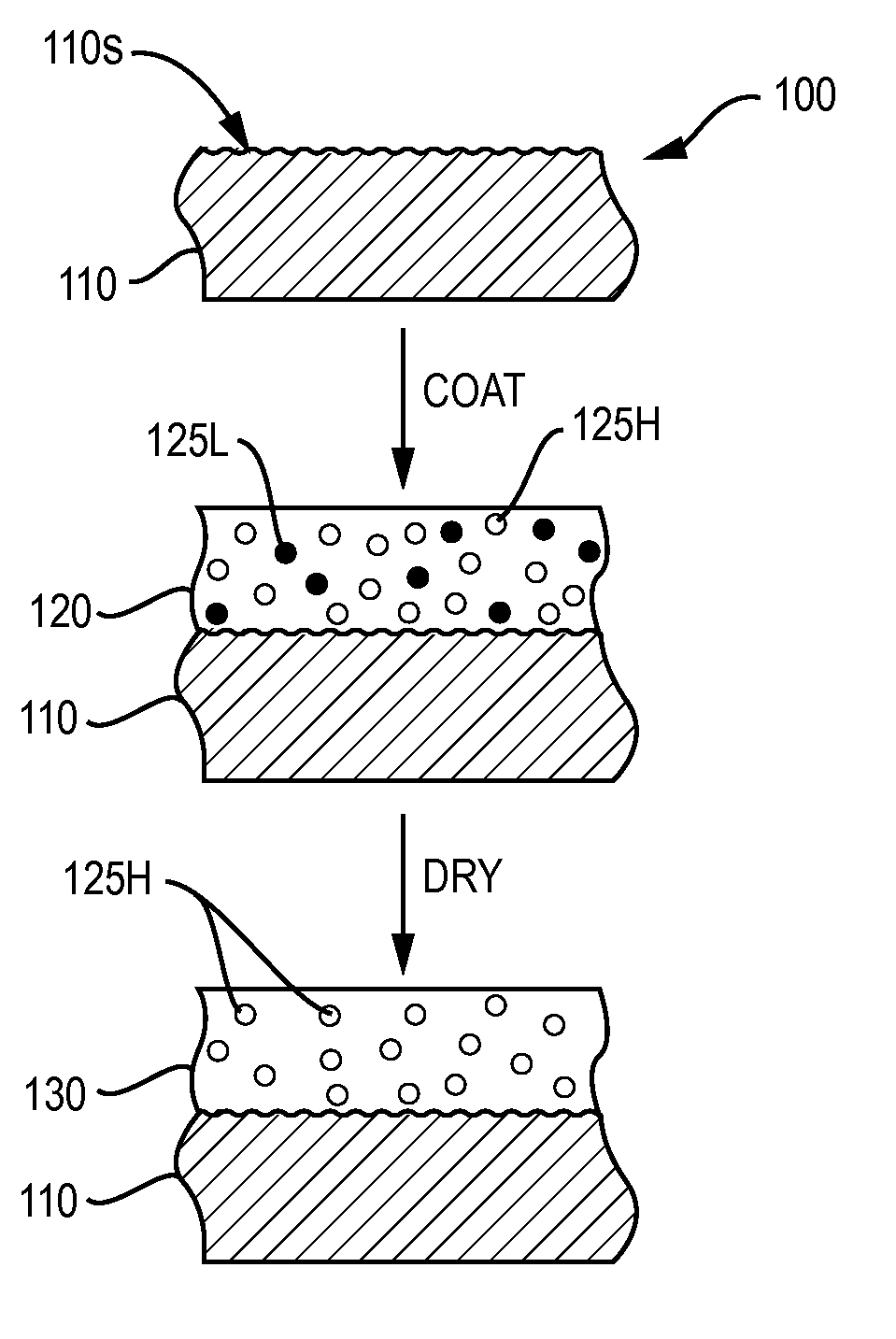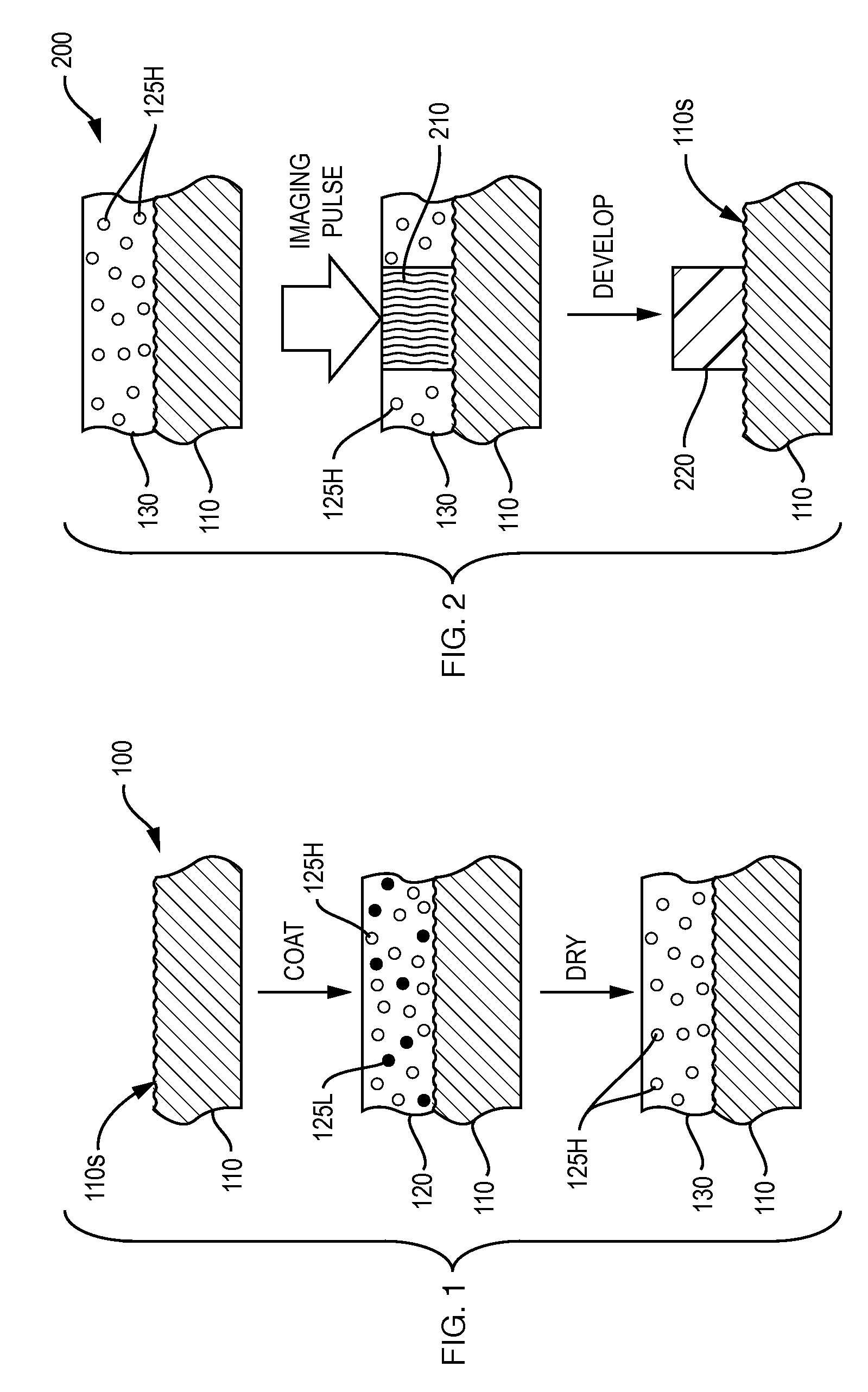Lithographic imaging and printing with printing members having fusible polymeric particles
a technology of printing members and polymeric particles, which is applied in the field of lithographic imaging and printing with printing members having fusible polymeric particles, can solve the problems of difficult handling and storage of plates, and can cause catastrophic overheating, so as to avoid the susceptibility of handling damage and facilitate developmen
- Summary
- Abstract
- Description
- Claims
- Application Information
AI Technical Summary
Benefits of technology
Problems solved by technology
Method used
Image
Examples
examples
[0067]Substrate Preparation
[0068]An Al sheet, having a thickness of 0.008″ with one side electrochemically grained and anodized, was cut into 10.5″×16.25″ sheets. A surface-treatment bath was prepared by diluting 0.567 kg of PVPS-30 (a 30% water solution of poly(vinyl phosphonic acid) (“PVPA”) from AZ Electronic Materials) to 17 kg total solution weight and stirring for 2 hours. The treatment bath was warmed to a constant temperature of 60° C. The sample was immersed in the treatment bath for 30 seconds, followed immediately by a rinse with a deionized water spray for at least 10 seconds. The excess water was driven off with a rubber squeegee, followed by drying in a forced air oven at 250° F. for at least 43 seconds, followed by a 15 second cool-down stage. The bottom half of each plate received a surface treatment, while the top half was left untreated.
[0069]In another set of tests, the 0.008″-thick Al Sheet was electrochemically grained and anodized, and then treated with a sodiu...
PUM
| Property | Measurement | Unit |
|---|---|---|
| thermal coalescing temperature | aaaaa | aaaaa |
| thermal coalescing temperature | aaaaa | aaaaa |
| mean diameter | aaaaa | aaaaa |
Abstract
Description
Claims
Application Information
 Login to View More
Login to View More - R&D
- Intellectual Property
- Life Sciences
- Materials
- Tech Scout
- Unparalleled Data Quality
- Higher Quality Content
- 60% Fewer Hallucinations
Browse by: Latest US Patents, China's latest patents, Technical Efficacy Thesaurus, Application Domain, Technology Topic, Popular Technical Reports.
© 2025 PatSnap. All rights reserved.Legal|Privacy policy|Modern Slavery Act Transparency Statement|Sitemap|About US| Contact US: help@patsnap.com


